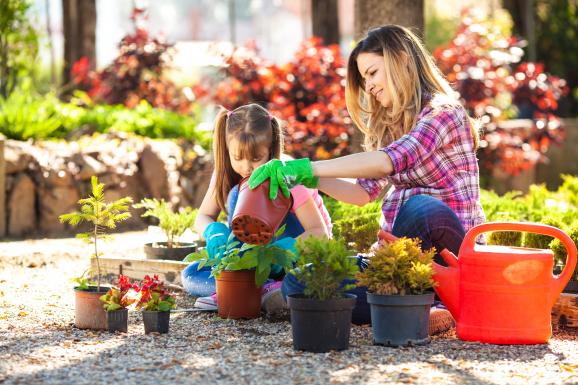New Home Tips: Why Tackling An Overgrown Garden Should Be A Priority
When you’ve just moved, sorting out the garden might not be high up your list of things to sort out. But once you’ve unpacked most of your boxes and started to get used to your new home, transforming your garden could be one of the best things to start off with. In this article, we take a look at why tackling an overgrown garden should be a priority and where to begin.
Why prioritize the garden in your new home?
Whether it’s something as straightforward as painting the walls and refreshing the place, or you need to replace a whole room, there are always plenty of things to sort out, update, and fix when you move somewhere new. But if the outdoor space is looking a bit neglected and overgrown, you might not think it’s a priority, especially if you’re not a keen gardener.
However, sorting out the garden in your new place can make a huge difference to the appearance of your home. It can transform it from looking run down and abandoned into a neat and tidy place to come home to — even if the insides are still a work in progress.
In fact, focusing on the garden can actually be a good way to add value to your property if you’re planning on selling it in the future. It’s often one of the more affordable things to update and fairly straightforward, and once it’s done it’ll require minimal maintenance to keep it looking nice. And being able to showcase your outdoor space is a great way to boost how much your property is worth when sellers are taking a look around.
Plus, once you’ve sorted out your garden it gives you a nice space to relax in and escape to, especially if you’re doing some serious renovations to the rest of your property.
How to tackle an overgrown garden
You don’t need to be an experienced gardener to get your garden looking green and full of life. These are a few starting points to help tackle an overgrown garden.
Clear away the rubbish
If your garden has been a dumping ground over the last few years there’s probably quite a lot of rubbish piling up. Start by doing a quick sweep of the garden to remove any junk or debris — things like broken garden furniture, disused water features, damaged plant pots, and anything that’s unusable should go straight away.
Trim back overgrown plants
Cut back any plants, hedges, or even trees that have started to take over in the garden to give you some clearer spaces. Don’t worry too much about how you’re cutting them back, just make them more manageable rather than cutting right back to the roots.
Identify plants to keep
Before completely clearing the garden it’s a good idea to have a look for any plants that you can identify. Underneath the overgrowth and between the weeds there’s likely to be some plants that are worth keeping. If you need a bit of help figuring out what's a plant and what’s a weed, you can use an app to help identify unknown plants.
Even if they’re looking a bit neglected as long as you can see some green on the plant there’s a good chance they’ll do well again with some care and attention.
Dig up weeds and dead plants
Once you’ve decided on the plants you want to leave then you can start de-weeding and removing dead plants. Try to work through the garden a small section at a time and completely pull up the weeds from the roots so that they don’t come back.
Improve the soil
In order to get your garden to flourish you need to work on improving the soil and tackling any problematic areas. A common issue in many gardens is clay soil, which can retain too much water and make it harder for plants to grow. Using a clay soil conditioner is an effective treatment for fixing the soil and ensuring the plants that you choose will do well. Once you’ve taken the time to improve your soil it will be easier to grow plants and keep them healthy.
Tidy up the lawn
If you have a lawn area, it should be easy to get it back in shape. Start by strimming down overgrown grass, then use a rake to clear out the cuttings and leaves. Reseed any sparse patches in the lawn and fill grass seeds n use some grass seeds to fill in any patches and water it regularly.
Add some plants
Once you’ve cleared and reclaimed your garden you can start to add in some plants. Choose seasonal plants that are already blooming or fast-growing plants so that you can fill in the garden quickly. Bright colorful plants are going to make it look finished and more together. And make sure you’re planting perennials so that they’ll keep coming back each year.
By tackling the garden first in your new home you’ll be able to make a visible difference to the property’s appearance, add value, and give yourself somewhere to relax.
Laura May is a Digital Editor at Just Another Magazine. She launched the magazine with co-founder Stevie last year and is probably at her happiest when she is writing or editing articles.
